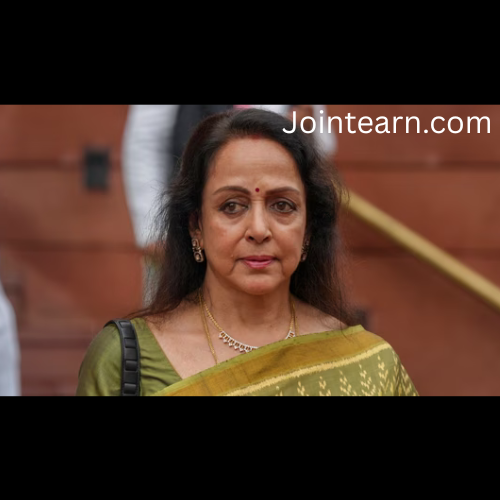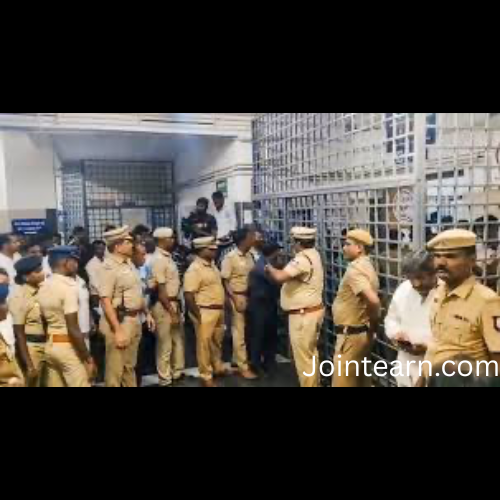Chandigarh, November 10, 2025: Tensions at Panjab University (PU) in Chandigarh escalated on Monday as a large protest demanding immediate elections for the university’s senate led to a brief clash with the Union Territory police. The protest reflects a wider debate about PU’s autonomy, the historical complexities of Chandigarh and Punjab, and the governance of one of India’s oldest educational institutions.
The demonstrators gathered in significant numbers at one of the main gates of the campus, forcing entry despite a heavy police presence. Officers wielding canes attempted to control the influx of protesters, but the sheer number of participants, including representatives of Sikh organizations, farmer unions, student groups, and alumni, made containment difficult. Police officials stated that their primary objective was to prevent outsiders from entering the campus, while Chandigarh Senior Superintendent of Police Kanwardeep Kaur personally tried to pacify the crowd.
By mid-morning, nearly 500 protesters had gathered near the roundabout in front of the vice-chancellor’s office, where a makeshift stage was set up. The protest began with an ardaas, a Sikh prayer, before several speakers addressed the crowd, urging the protection of the university’s autonomy. Among the key speakers were PUCSC Vice-President Ashmeet Singh, former senator Ravinder Singh Dhaliwal, student leader Rimaljot Singh, and Students for Society president Sandeep. Other organizations also had their representatives speak, reinforcing a broad coalition of voices from within the university and beyond. Despite the protest, the campus was largely deserted, as the administration had declared November 10 and 11 holidays in anticipation of the stir.
The tension extended beyond the university campus to surrounding areas. Approximately 2,000 police personnel were deployed across Chandigarh, and 12 checkpoints were set up, causing traffic disruptions, particularly on the Zirakpur–Chandigarh highway. Significant congestion was reported at the borders with Mohali and Mullanpur in Punjab, as authorities sought to prevent additional protesters from entering the city.
The current unrest has its roots in the Central government’s move in late October 2025 to amend the Panjab University Act, 1947, which would have substantially restructured the university’s governing bodies. Specifically, the notification proposed reducing the size of the senate from 90 members to 31 and eliminating elections for the syndicate, PU’s executive body. This overhaul would have removed the larger constituency of PU graduates from the electoral process, effectively ending the broader democratic participation in university governance.
The proposed changes, seen as a threat to PU’s autonomy, ignited protests across Punjab. Many interpreted the move as an infringement on federal principles, particularly given the historical context of Chandigarh and the division of Punjab post-independence. The Central government initially sought to defer the implementation of the reforms, but protests intensified under the banner of the Panjab University Bachao Morcha, which demanded immediate scheduling of senate elections. By November 7, the Centre rescinded the notification entirely. However, demonstrators insisted that their agitation would continue until a formal election schedule was announced.
The historical and political context of the university amplifies the current controversy. PU was originally established in Lahore in 1882 as the University of the Punjab under British colonial rule, making it one of India’s oldest universities. After Partition in 1947, the eastern wing of Punjab formed a new Panjab University, initially headquartered in Shimla, then Rohtak, Jalandhar, and finally Chandigarh. The Punjab Reorganisation Act, 1966 subsequently created an “inter-state body corporate” for PU, with Chandigarh designated as a Union Territory jointly serving as the capital of both Punjab and Haryana. Funding for the university continues to be shared, with the Centre providing roughly 85% of PU’s budget, while Punjab contributes the remainder.
These arrangements have long been a source of contention. Punjab, a Sikh-majority state, has historically viewed the allocation of Chandigarh and associated institutional controls as grievances stemming from the 1966 reorganization. Such disputes over Chandigarh, river waters, and administrative authority have occasionally flared into political tensions, particularly during periods of militancy in the 1980s and 1990s. Consequently, debates over PU’s governance are inseparable from larger questions of state autonomy, federal balance, and historical rights.
The current protest also draws wider political participation. Punjab Chief Minister Bhagwant Mann of the Aam Aadmi Party accused the Centre of attempting a “backdoor entry into PU,” asserting that the state would not surrender its rights. Former professors, alumni, student organizations like the All India Sikh Student Federation (AISSF), activists such as Lakha Sidhana, and cultural figures including actor-director Amitoj Mann and singer Satinder Sartaaj have lent support to the protest. Senior leaders from Congress and Shiromani Akali Dal have also engaged with the movement, reflecting broad political resonance.
The debate over reforming PU’s governance predates the current protests. In 2021, then Vice President M. Venkaiah Naidu, serving as chancellor of PU, constituted an 11-member committee to recommend changes in line with the National Education Policy (NEP) 2020. The committee suggested streamlining the senate and syndicate for efficiency, proposing the replacement of graduate-elected seats with nominations of eminent alumni and academicians. University officials have argued that elections, particularly for graduate constituencies, are complex, costly, and increasingly out of step with contemporary academic priorities.
Supporters of the reform, including VS Chauhan, former NAAC chairman and panel member, welcomed the proposed changes, describing them as aligned with NEP 2020’s emphasis on merit-based and streamlined governance. However, protesters have rejected these claims, labeling the reforms anti-democratic and an attempt to undermine the participatory rights of graduates and other stakeholders. The new structure would have reduced the senate to 31 members, of whom 24 would be nominated and seven ex-officio. Although representation of Punjab’s ex-officio members—including the Chief Minister, the Chief Justice of the Punjab and Haryana High Court, and the state education minister—remains unchanged, graduate-elected seats would be reduced from 15 to two nominated alumni, sparking significant dissent.
University officials contend that the existing senate had become highly politicized, with elections consuming significant resources and often diverting attention from academic priorities. Protesters, however, argue that democratizing governance and preserving alumni voices is crucial to maintaining PU’s historic legacy and institutional autonomy. The clash on Monday, while brief, underscores the intensity of these disagreements and highlights the intersection of educational governance, politics, and regional identity.
The Panjab University agitation thus extends beyond a campus dispute. It symbolizes broader concerns about federalism, state rights, historical grievances, and the democratic participation of citizens in institutional governance. The movement has attracted national attention, with stakeholders across academia, politics, and civil society closely watching developments. For students, alumni, and Punjab’s citizens, the fight over PU’s autonomy represents a continuation of a long historical struggle for institutional self-determination and regional assertion, reflecting both past and contemporary political dynamics in India’s northwestern states.
As of now, protests continue peacefully, with demonstrators demanding a concrete timeline for senate elections. The administration, police, and stakeholders face the challenge of ensuring safety, maintaining campus order, and balancing the competing imperatives of governance reform, historical sensitivities, and democratic participation. The coming days are expected to shape not only the future of Panjab University but also the broader debate over institutional autonomy, state-Centre relations, and citizen engagement in Punjab.


Leave a Reply